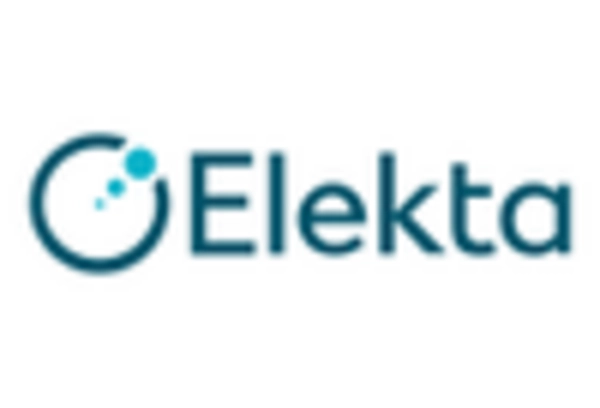Rising Healthcare Expenditure
India's healthcare expenditure has been on an upward trajectory, which is expected to positively influence the single photon-emission-computed-tomography market. With the government aiming to increase public health spending to 2.5% of GDP by 2025, there is a growing allocation of funds towards advanced medical technologies. This financial commitment is likely to facilitate the procurement of sophisticated imaging equipment, including SPECT systems, in hospitals and diagnostic centers. As healthcare facilities upgrade their infrastructure to meet the increasing demand for quality healthcare services, the single photon-emission-computed-tomography market stands to benefit significantly. The enhanced availability of SPECT technology may lead to improved diagnostic accuracy and patient care, further driving market growth.
Growing Awareness of Early Diagnosis
There is a notable increase in awareness regarding the importance of early diagnosis among the Indian population, which is likely to propel the single photon-emission-computed-tomography market. Public health campaigns and educational initiatives are emphasizing the benefits of early detection of diseases, particularly in oncology and cardiology. This heightened awareness is encouraging patients to seek advanced diagnostic services, including SPECT imaging, which is known for its ability to provide detailed functional information about organs. As more individuals opt for preventive healthcare measures, the demand for SPECT technology is expected to rise, thereby contributing to the growth of the market in India.
Technological Innovations in Imaging
Technological advancements in imaging modalities are transforming the landscape of the single photon-emission-computed-tomography market. Innovations such as hybrid imaging systems, which combine SPECT with CT or MRI, are enhancing diagnostic capabilities and improving patient outcomes. These advancements allow for more accurate localization of diseases and better assessment of treatment responses. The introduction of new radiopharmaceuticals is also expanding the applications of SPECT imaging, making it a versatile tool in oncology and cardiology. As healthcare providers in India increasingly adopt these technologies, the single photon-emission-computed-tomography market is likely to experience substantial growth, driven by the demand for more effective diagnostic solutions.
Expansion of Diagnostic Imaging Centers
The expansion of diagnostic imaging centers across India is a crucial driver for the single photon-emission-computed-tomography market. With an increasing number of private and public healthcare facilities investing in advanced imaging technologies, access to SPECT imaging is becoming more widespread. This trend is particularly evident in tier-2 and tier-3 cities, where the establishment of new diagnostic centers is improving healthcare accessibility. As these centers adopt state-of-the-art SPECT systems, the market is likely to witness significant growth. The proliferation of diagnostic imaging centers not only enhances patient access to advanced diagnostic tools but also fosters competition, potentially leading to improved service quality and affordability in the single photon-emission-computed-tomography market.
Increasing Prevalence of Chronic Diseases
The rising incidence of chronic diseases in India, such as cardiovascular disorders and cancer, is a primary driver for the single photon-emission-computed-tomography market. As healthcare providers seek advanced diagnostic tools to improve patient outcomes, the demand for SPECT imaging is likely to increase. According to recent estimates, chronic diseases account for approximately 60% of all deaths in India, highlighting the urgent need for effective diagnostic solutions. The single photon-emission-computed-tomography market is positioned to address this need, offering precise imaging capabilities that aid in early detection and treatment planning. Furthermore, the integration of SPECT with other imaging modalities may enhance its utility, potentially leading to a broader adoption in clinical settings across the country.

















Leave a Comment